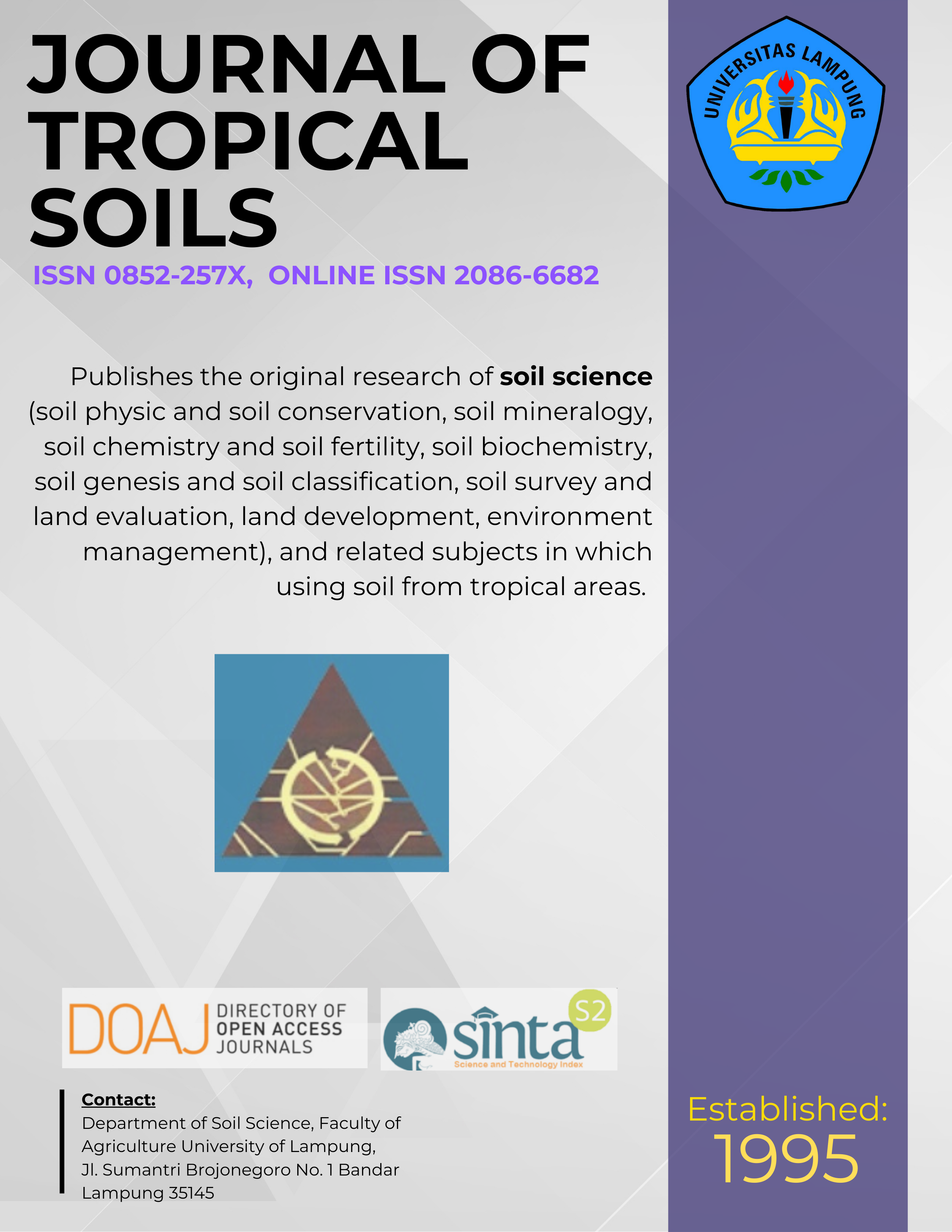Soil Layers Properties of a Profile Developed on the Past Depositional Series on Merbabu Volcano Central Java Indonesia
Main Article Content
Abstract
A wide and deep soil profile (around 1200 cm) was observed at Ketep Park West Slope of Merbabu volcano Central Java, Indonesia to identify the soil morphology, physical and, chemical and mineralogical properties. Results showed that several soil development processes occurred in each volcanic deposits with different characteristics. Most soil layers met some of andic soil properties criteria such bulk density <0.9 g.cm-3, P retention of >85%, and (Alo + ½ Feo) >2.0%. A thin melanic material showing black color layer was found at the lower part of the soil profile, i.e. in depth from 726 to 798 cm. The dominant material in most soil layers is an allophane. Minerals in the sand fraction were dominated by labradorite and augite, with some layers were hypersthene and green hornblende.
Downloads
Download data is not yet available.
Article Details
Issue
Section
Articles
License for Authors
Authors who publish with this journal agree to the following terms:
- Authors retain copyright and grant the journal right of first publication with the work simultaneously licensed under a Creative Commons Attribution License that allows others to share the work with an acknowledgement of the work's authorship and initial publication in this journal.
- Authors are able to enter into separate, additional contractual arrangements for the non-exclusive distribution of the journal's published version of the work (e.g., post it to an institutional repository or publish it in a book), with an acknowledgement of its initial publication in this journal.
- Authors are permitted and encouraged to post their work online (e.g., in institutional repositories or on their website) prior to and during the submission process, as it can lead to productive exchanges, as well as earlier and greater citation of published work (See The Effect of Open Access).
License for Regular Users
Other regular users who want to cite, distribute, remix, tweak, and build upon author’s works, even for commercial purposes, should acknowledge the work’s authorship and initial publication in this journal, licensed under a Creative Commons Attribution License.
How to Cite
Soil Layers Properties of a Profile Developed on the Past Depositional Series on Merbabu Volcano Central Java Indonesia. (2019). JOURNAL OF TROPICAL SOILS, 24(2), 53-63. https://doi.org/10.5400/jts.2019.v24i2.53-63

